few words about our champion:
- System:
- ARM Cortex-M0+ processor, running at frequencies of up to 30 MHz with single-cycle multiplier and fast single-cycle I/O port
- ARM Cortex-M0+ built-in Nested Vectored Interrupt Controller (NVIC)
- System tick timer
- Serial Wire Debug (SWD) and JTAG boundary scan modes supported
- Micro Trace Buffer (MTB) supported
- Memory:
- 16 kB on-chip flash programming memory
- 4 kB SRAM
- Boot ROM API support:
- Boot loader
- USART drivers
- I²C drivers
- Power profiles
- Flash In-Application Programming (IAP) and In-System Programming (ISP)
- Digital peripherals:
- High-speed GPIO interface connected to the ARM Cortex-M0+ IO bus with 14 General Purpose I/O (GPIO) pins with configurable pull-up/pull-down resistors
- GPIO interrupt generation capability with boolean pattern-matching feature on eight GPIO inputs
- Switch matrix for flexible configuration of each I/O pin function
- State Configurable Timer (SCT) with input and output functions (including capture and match) assigned to pins through the switch matrix
- Multiple-channel multi-rate timer for repetitive interrupt generation at up to four programmable, fixed rates
- Self Wake-up Timer (WKT) clocked from either the IRC or a low-power, low-frequency internal oscillator
- CRC engine
- Windowed Watchdog timer
- Analog peripherals:
- Comparator with external voltage reference with pin functions assigned or enabled through the switch matrix
- Serial interfaces:
- Three USART interfaces with pin functions assigned through the switch matrix
- Two SPI controllers with pin functions assigned through the switch matrix
- One I²C-bus interface with pin functions assigned through the switch matrix
- Clock generation:
- 12 MHz internal RC oscillator trimmed to 1 % accuracy that can optionally be used as a system clock
- Crystal oscillator with an operating range of 1 MHz to 25 MHz
- Programmable watchdog oscillator with a frequency range of 9.4 kHz to 2.3 MHz
- 10 kHz low-power oscillator for the WKT
- PLL allows CPU operation up to the maximum CPU rate without the need for a high-frequency crystal. May be run from the system oscillator, the external clock input CLKIN, or the internal RC oscillator
- Clock output function with divider that can reflect the crystal oscillator, the main clock, the IRC, or the watchdog oscillator
- Power control:
- Integrated PMU (Power Management Unit) to minimize power consumption
- Reduced power modes: Sleep mode, Deep-sleep mode, Power-down mode, and Deep power-down mode
- Power-On Reset (POR)
- Brownout detect
- Unique device serial number for identification
- Single power supply
- Operating temperature range -40 °C to 105 °C
- Available as XSON16 package
Board Schematic
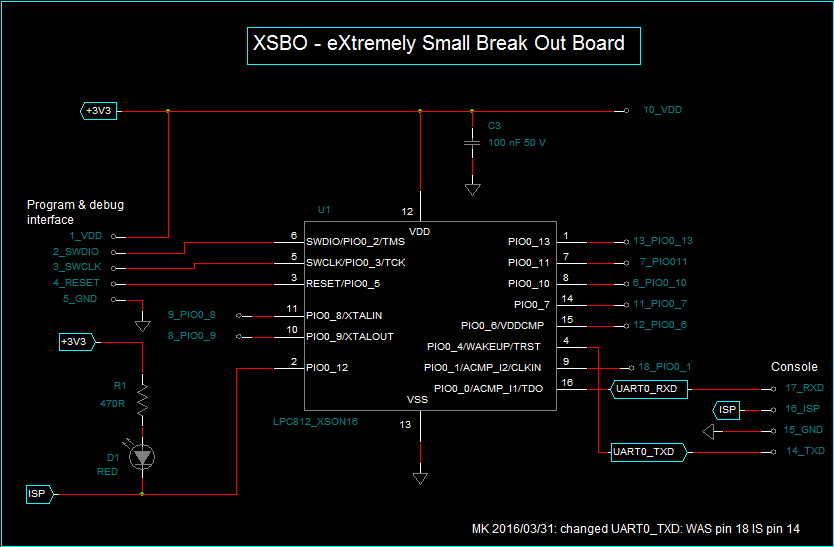
Board Pinout (Top View)
The pitch of the pins is 2.54 mm (100 mill).
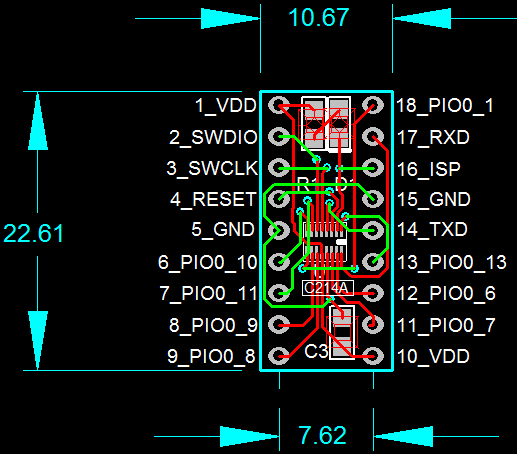
 Michel Kuenemann
Michel Kuenemann
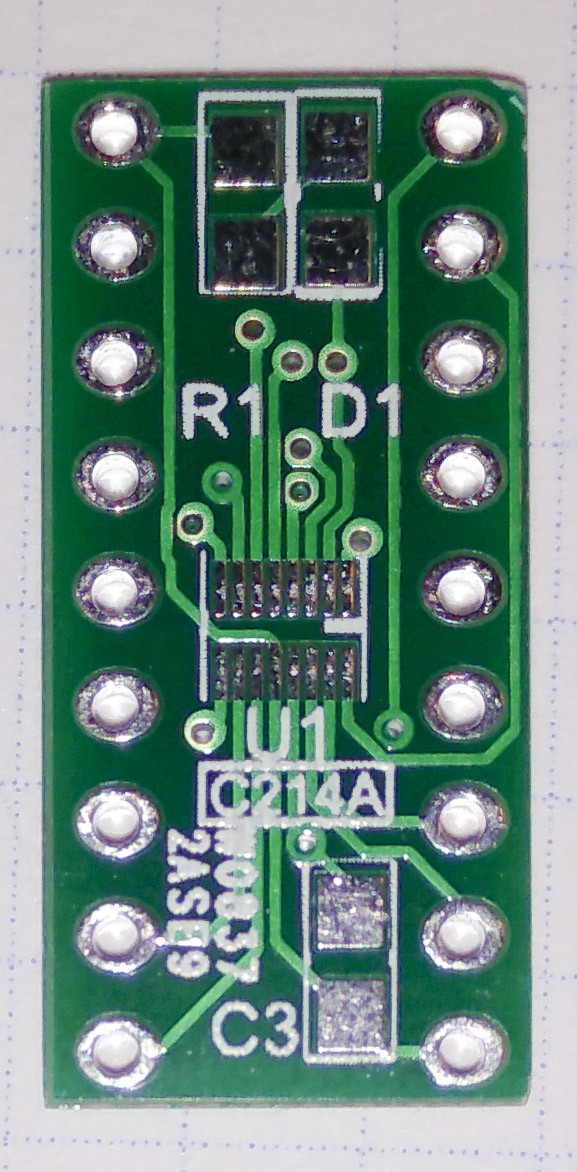






 Ben Lim
Ben Lim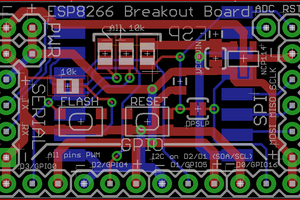
 Sukasa
Sukasa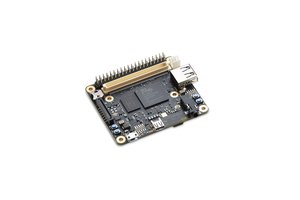
 Martin Heimlicher
Martin Heimlicher
Hi Michel, really nice and tiny project in the similar climate like mine :)
https://hackaday.io/project/10412-awesome-pcb-breakout-board-for-most-popular-smd
Cheer Simon.